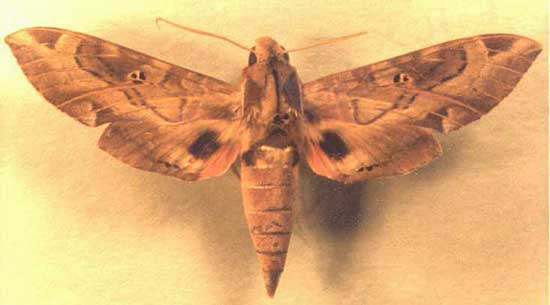Eumorpha satellitia posticatus
you-MOR-fuhmmsat-el-LYTE-ee-uhmmpoh-stih-CAY-tus
(Grote, 1865)
Philampelus

Eumorpha satellitia posticatus courtesy of V. A. Brou.
This site has been created by
Bill Oehlke at oehlkew@islandtelecom.com
Comments, suggestions and/or additional information are welcomed by Bill.
TAXONOMY:Superfamily: Sphingoidea, Dyar, 1902 |
"What.A.Wonderful.World" |